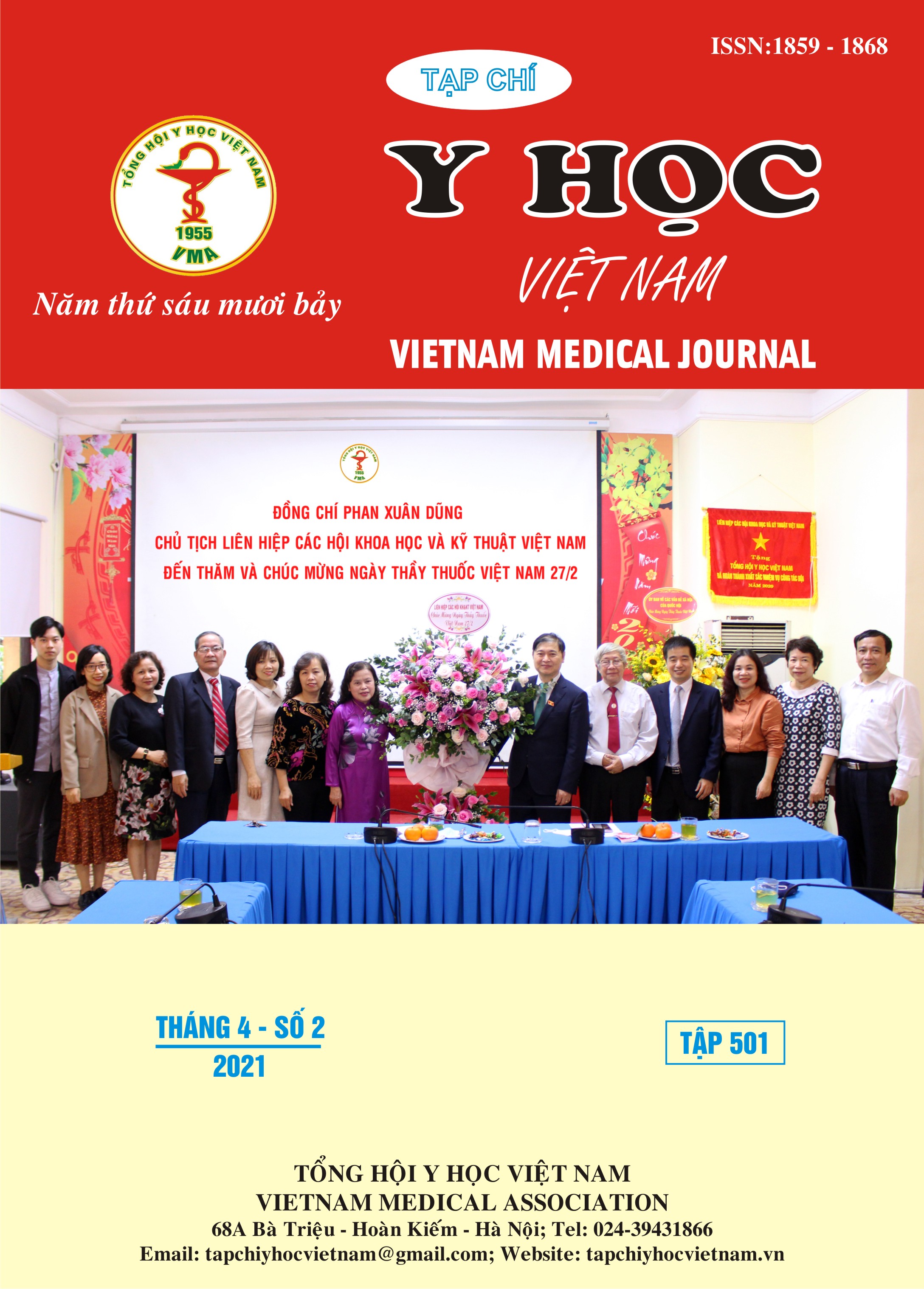VALUE OF NON-INVASIVE MARKERS IN PREDICTION PORTAL HYPERTESION IN CHILDREN
Main Article Content
Abstract
Background & aims: The validation of noninvasive tests to diagnose esophageal varices is very important in children because endoscopic has some risks. We measured the ability of some noninvasive clinical prediction rule to predict the presence of esophageal varices in children. Method: A cross-sectional descriptive study in 108 pediatric patients have median age 1 year, quartile age 1-5 years, who were suspected portal hypertension symptoms (PH). Gastroesophageal endoscopy was taken as a gold standard. Results: Of the children studied, 79 had esophageal varices (75,4%). The most common symptoms in PH children were hepatomegaly (44.3%), splenomegaly (98.7%), anemia (60.8%) and thrombocytopenia (73.4%). For patients with clinically suspected PH such as splenomegaly, platelets below 120G/L, cut-off of noninvasive marker of esophageal varices can be used to predict PH such as AST/ALT ≥ 1.06; APRI ≥0.86, GUCI ≥1.37, FI ≥2.87. Conclusions: Some noninvasive markers as platelet, AST/ALT, APRI, GUCI, FI can be useful as a first line tool to identify PH patients to reduce the risk of upper endoscopies.
Article Details
Keywords
noninvasive markes, portal hypertension
References
2. Gana JC, Turner D, Mieli–Vergani G, et al. A Clinical Prediction Rule and Platelet Count Predict Esophageal Varices in Children. Gastroenterology. 2011;141(6):2009-2016.
3. Deng H, Qi X, Guo X. Diagnostic Accuracy of APRI, AAR, FIB-4, FI, King, Lok, Forns, and FibroIndex Scores in Predicting the Presence of Esophageal Varices in Liver Cirrhosis: A Systematic Review and Meta-Analysis. Medicine. 2015;94(42):e1795.
4. Hussain F, Karim AB, Matin A, Sultana K, Anwar SA. Portal Hypertension: 2 years Experience in Department of Pediatric Gastroenterology and Nutrition, at a Tertiary Care Hospital, Bangladesh. Journal of Shaheed Suhrawardy Medical College. 2016;8(1):26-29.
5. Yunfu L. Changes of Peripheral Blood Cells in Patients with Cirrhotic Portal Hypertension. In: Garbuzenko D, ed. Portal Hypertension - Causes and Complications. InTech; 2012.Sahin A, Artas H, Tunc N, Yalniz M, Bahcecioglu IH. Hematological Indices in Portal Hypertension: Cirrhosis versus Noncirrhotic Portal Hypertension. J Clin Med. 2018;7(8).
6. Adami MR, Kieling CO, Schwengber FP, Hirakata VN, Vieira SMG. Noninvasive Methods of Predicting Large Esophageal Varices in Children With Intrahepatic Portal Hypertension: Journal of Pediatric Gastroenterology and Nutrition. 2018;66(3):442-446.
7. Mahajan A, Ghildiyal RG, Karnik P. Clinicopathological Correlation of Portal Hypertension in Children and Management Strategies. Int J of Biomed & Adv Res. 2018; 9(2):70-75.
8. Sebastiani G, Tempesta D, Fattovich G, et al. Prediction of oesophageal varices in hepatic cirrhosis by simple serum non-invasive markers: Results of a multicenter, large-scale study. Journal of Hepatology. 2010;53(4):630-638.


